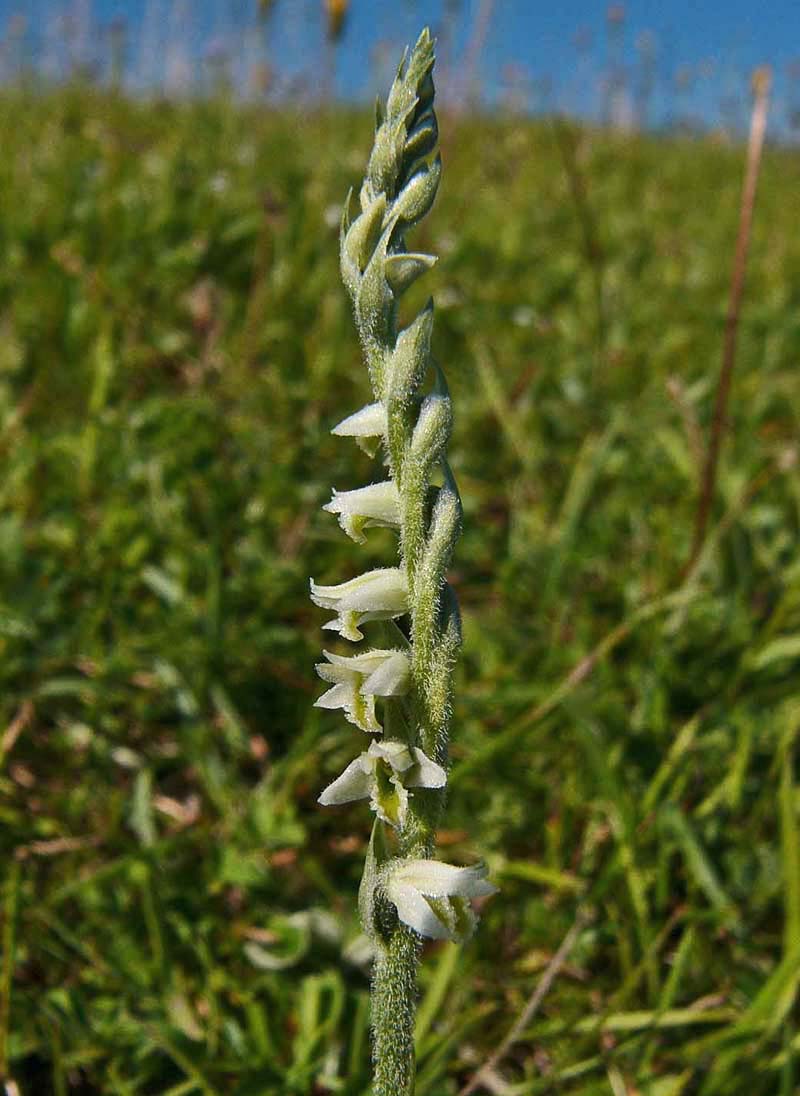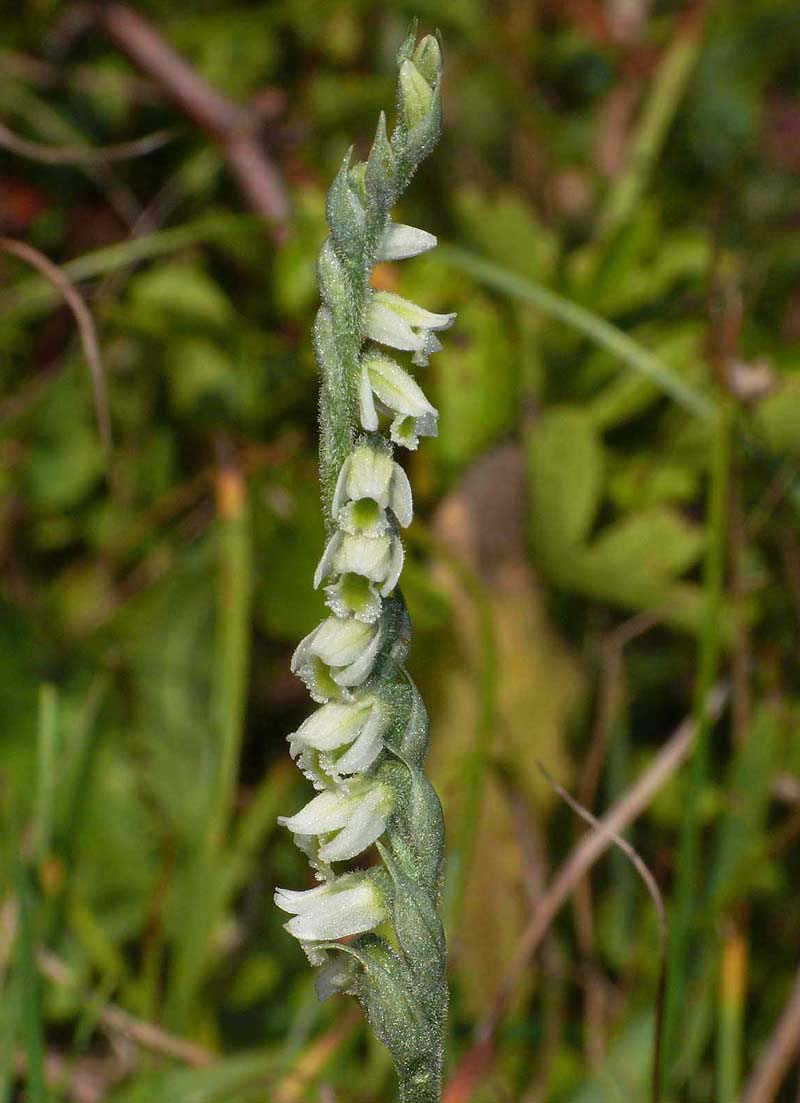S. spiralis was
first described from Strasbourg, France in 1753, taking its name from
the way in which the flowers
are spirally arranged along the stem. Its common name is Autumn
Lady's Tresses and in many parts of Europe it is one of
the very last orchids of the summer, often still being in flower at the
end of September. In some areas of the Mediterranean including Sicily
and Cyprus, this flowering period can even extend to the later weeks of
October.
This is by far the most frequent of the four species of Spiranthes occurring in Europe, being found from southern Scandinavia in the north to the Mediterranean (including North Africa) in the south. S. spiralis can grow in large colonies but is always local and may be absent from large tracts of seemingly perfect terrain. It is perhaps familiar to most people as a late blooming orchid of dry alkaline grasslands and it's therefore a surprise to many that it can thrive on relatively acidic substrates and even within open pinewoods. Although this species can occasionally be found in damp conditions, it primarily seeks a dry position in full sun with close cropped vegetation. This is in direct contrast to both S. romanzoffiana and S. aestivalis which may only be found in damp and often marshy habitats. S. spiralis can also be separated from other species of the genus by its tight inflorescence, the grey/blue colouration of the stem and the flowers in which the lateral sepals are held slightly away from the lip.
It is a small orchid which in open grassland rarely exceeds 20cms in height, although where it occurs in pinewoods, can reach a spindly 35cms. S. spiralis can be an unpredictable flowerer and its appearance seems critically linked to rainfall levels through the spring/summer development period. The illustrations are all from Dorset (UK) and date from the first week of September.
This is by far the most frequent of the four species of Spiranthes occurring in Europe, being found from southern Scandinavia in the north to the Mediterranean (including North Africa) in the south. S. spiralis can grow in large colonies but is always local and may be absent from large tracts of seemingly perfect terrain. It is perhaps familiar to most people as a late blooming orchid of dry alkaline grasslands and it's therefore a surprise to many that it can thrive on relatively acidic substrates and even within open pinewoods. Although this species can occasionally be found in damp conditions, it primarily seeks a dry position in full sun with close cropped vegetation. This is in direct contrast to both S. romanzoffiana and S. aestivalis which may only be found in damp and often marshy habitats. S. spiralis can also be separated from other species of the genus by its tight inflorescence, the grey/blue colouration of the stem and the flowers in which the lateral sepals are held slightly away from the lip.
It is a small orchid which in open grassland rarely exceeds 20cms in height, although where it occurs in pinewoods, can reach a spindly 35cms. S. spiralis can be an unpredictable flowerer and its appearance seems critically linked to rainfall levels through the spring/summer development period. The illustrations are all from Dorset (UK) and date from the first week of September.









